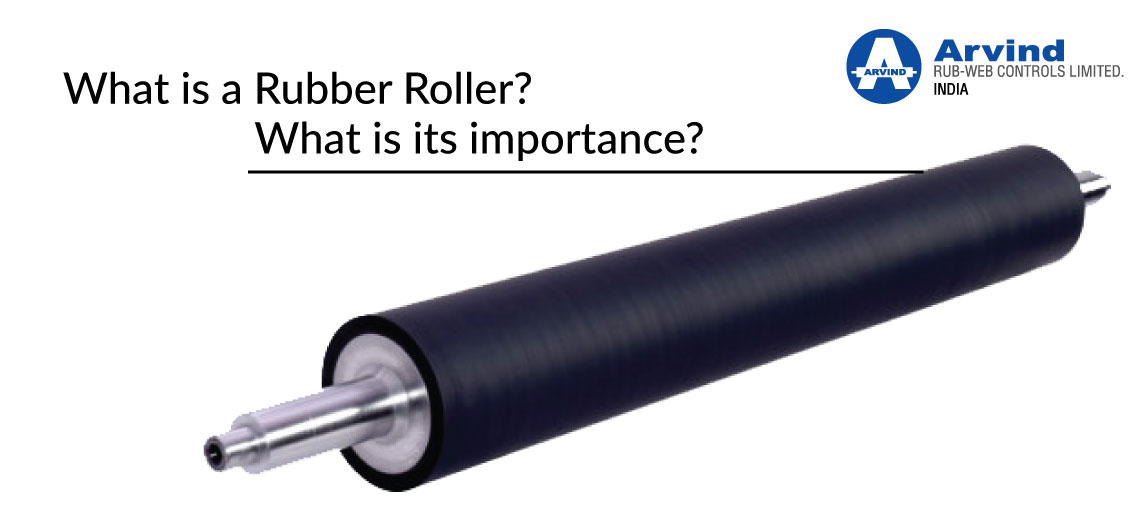
Manufacturing industries across the globe rely on rubber rollers to seamlessly conclude myriad applications. Before making a deep-dive into the significant industrial subject, it’s pertinent to comprehend the term Rubber Roller in the layman’s language.
What is a Rubber Roller?
A rubber roller is a sophisticated machine comprising a metallic inner round shaft or tube which is covered through an exterior layer of elastomer compounds or rubber. The inner metallic shaft could be of steel or aluminum or any other industry-specific metal, depends on the rubber roller manufacturer. Coming back to rubber roller layer, the outer layer is generally manufactured using a premium-quality polymer, including polyurethane, silicone, EPDM, neoprene, and natural rubber.
Industrial rubber rollers, like rubber bow roller, are being used in various applications requiring a high degree of contact and holding friction. Besides, the industrial product is also used in material processing applications wherein a soft touch is required.
Types of Rubber Rollers
Based on industrial use, rubber rollers manufacturer design and fabricate rubber rollers. There types comprise:
Ink Rollers: These are the rollers being used to apply ink to paper and a host of other materials. Rollers may have a sophisticated cavity for ink or may be designed to apply ink.
Laminating rollers: These are fabricated using heat resistant materials, including silicon rubber. These are used to laminate materials on a wide scale, heated up to 500°F before application.
Drive rollers: Such rollers rely on movement and are used in a wide range of industries for web and converters machines. This function with the support of integral shafts embedded with a keyway that acts as a gear.
Guide rollers: These rollers are also called idler rollers as they give support to various other systems of rollers, including conveyors. What’s particular about these rollers is that they do not move anything.
Grooved rollers: These are called so because these are embedded with a grooved pattern. These are generally applied to moving systems, including belt-driven conveyor systems.
Conveyor rolls: These types of rubber rollers are used to move or convey materials from one production line to another.
Live shaft rollers: Such rollers are manufactured to endure challenging environments and high load quantities. These are equipped with external bearings wherein not only the roller shaft but also the roller rotates.
Dead shaft rollers: These are embedded with internal bearings which are situated at the same place as a spinning roller. This spinning roller revolves around a stationary shaft.
Cleaning rollers: As the name suggest, these kinds of rollers are used for a cleaning purpose, to remove dust and dirt particles from various types of surfaces.
Spreader rollers: Such types of rollers are applicable for webs spreading machinery and a host of other spreading applications. Their application stretches and spreads the web and prevents wrinkles.
Stinger rollers: These are manufactured and configured like dead shaft rollers. Owing to their applications, these are being leveraged for a wide range of marine applications.
Urethane rollers: Such rollers are also known as polyurethane rollers as these are manufactured using synthetic roller from polyurethane. These types of rubber rollers are used in various applications, including data storage, packaging and assembling, printing, material handling, measurement systems and office equipment among others.
Advantages of rubber rollers
Rubber rollers are being used cutting across industries for a wide range of applications. These provide numerous advantages. In comparison to metal rollers which are being used in different types of conveyor systems and industries, rubber rollers have high coefficient of friction. This property offers magnificent grip in various moving parts and components. Besides, rubber roller doesn’t lose shape after being compressed during application processes. It achieves normal shape at the earliest.
It isn’t over yet. Rubber is a fine absorber of shocks and resists wear and tear. There’s another advantage, after continuous use rubber gets damaged, unlike other materials, it’s easy to replace, overhaul and repair. As an industrialist, what else do you expect from a roller!
Industry
Rubber rollers are being used in numerous industries for a wide range of applications. These are predominantly used in conveyor belts during the production process to move finished or under process goods. It’s because of its key property – high coefficient of friction. Rubber rollers are being used in a number of industries, including:
-
Plastic
Summary
Rubber Rollers are a boon to the industrial movement. Industries globally are employing them to streamline their production process and scale their business. Quality makes all the difference in production. While buying rubber rollers, including rubber bow roller from an India-based manufacturer, make sure these are in line with the global standards. After all, it’s going to impact the future of the company! Never settle for low quality.


